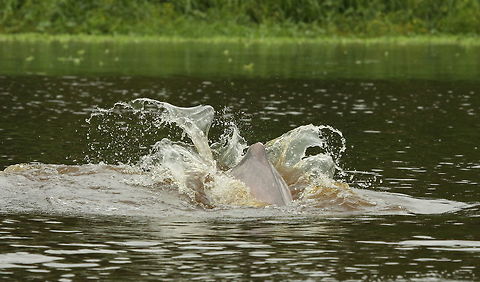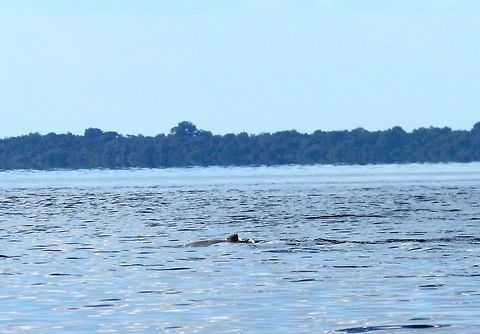
Appearance
The tucuxi is frequently described as looking similar to the bottlenose dolphin, but it is typically smaller at around 1.5 m . The dolphin is colored light to bluish grey on its back and sides. The ventral region is much lighter, often pinkish. The dorsal fluke is typically slightly hooked. The beak is well-defined and of moderate length. There are 26 to 36 pairs of teeth in the upper and lower jaws.
Distribution
The tucuxi exists along much the length of the Amazon River and many of its tributaries, and is found in Brazil, Peru, southeastern Colombia, and eastern Ecuador. Numerous individuals have been seen in the Orinoco River further north, though it is not clear whether these are tucuxi or costero.Status
The tucuxi is endemic to the regions described above; although no precise estimates of population are available, it is common. A significant human problem are fishing nets. Deliberate hunting in the Amazon Basin for food has also been reported. Pollution, in particular mercury poisoning of water due to gold mining, is a particular concern for this species.Tucuxis are observed not to maintain good health and attitude in captive environments. A few tucuxis remained in captivity in European aquaria, but the last one died in 2009 in the Zoo of Münster, Germany.
The tucuxi is listed on Appendix II of the Convention on the Conservation of Migratory Species of Wild Animals . It is listed on Appendix II as it has an unfavourable conservation status or would benefit significantly from international co-operation organised by tailored agreements.
Behavior
The tucuxi exists in small groups of about 10-15 individuals, and swim in tight-knit groups, suggesting a highly developed social structure. Tucuxis are quite active and may jump clear of the water , somersault, spy-hop or tail-splash. They are unlikely, however, to approach boats.Tucuxis have been observed to feed with other river dolphins. They feed on a wide variety of fish. Studies of growth layers suggest the species can live up to 35 years.
References:
Some text fragments are auto parsed from Wikipedia.